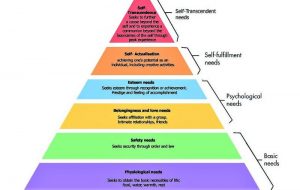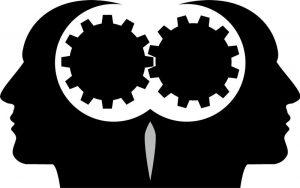Gender dysphoria
Gender dysphoria is a state that involves a conflict that originates between the physical or assigned gender that a person has and the gender with which he, she or they identify. People with gender dysphoria may feel very uncomfortable with the gender they were assigned or born with. People with gender dysphoria sometimes describe it as a set of discomforts with their own body, primarily during puberty or they may feel uncomfortable with the expected roles of their assigned gender. People with gender dysphoria can often experience significant difficulties and functioning problems associated with this conflict between the way they feel and the way they think about themselves and their physical or assigned gender.

Related topics
Gender identity, sexual identity
What is gender dysphoria?
Gender dysphoria is the condition in which a person feels that their gender identity does not match their real biological sex. It is a disorder related to one's own gender identity.
Causes of gender dysphoria
Gender dysphoria is a condition that usually appears at an early stage of a person’s development. Generally, children begin to identify their biological sex around three or four years old. It usually manifests itself in children’s refusal to wear clothing according to their sex, or to participate in activities or games that have been “designated” to their gender. Causes can be classified into:
- Psychiatric and biological causes: this type of cause indicates that the condition is not specifically linked to psychiatric situations or mental Studies indicate that gender dysphoria may have associated biological causes from before birth.
- Genetic causes of biological sex: research explains that each individual has two sex chromosomes, one from the father and one from the mother. A man should have one X and one Y chromosome, while a woman should have two X chromosomes. Studies show that, during early pregnancy, babies are all female because only the X chromosome is active. After the 8th week of pregnancy, the father’s chromosome begins its activity.
- Hormonal changes: Hormones are responsible for triggering sex and these may not work properly. In this way, the anatomical sex may be male, but the gender identity that comes from the brain is female.
- Exposure to progesterone: Fetuses who are exposed to progesterone in the womb have been shown to be at high risk for gender dysphoria.
- Strange conditions: These conditions include congenital hyperplasia and hermaphroditism that can lead to dysphoria. In congenital hyperplasia there is an elevated production of male hormones which causes female babies to be affected by a high production of male hormones and during birth, the girl may be mistaken for a boy. In hermaphroditism, babies can be born with sexual organs of both sexes, this being the case, children grow and then choose their sex before performing sex repair surgery.
Symptoms of gender dysphoria
Symptoms are based on the person’s or child’s insistence on belonging to another sex, looking for ways to fit into opposite sex activities and situations. Their fantasies of belonging to the opposite sex are constant and they like to dress up in clothes that do not match their sex. They don’t like their sexual organs, they feel uncomfortable doing normal functional activities, they react the same way they would if they didn’t have the sex they were born with. They are constantly worried about how to eliminate their primary and secondary sexual characteristics.
Diagnosis
The Statistical Diagnostic Manual of Mental Disorders provides a general diagnosis of gender dysphoria with separate specific criteria for children and for adolescents and adults.
In adults and adolescents the diagnosis is generally made according to the following aspects:
- There is a marked incongruence between the gender experienced and the primary or secondary sexual
- Desire to get rid of primary or secondary sexual characteristics.
- Desire for the primary and/or secondary sexual characteristics of the other gender.
- People feel the desire to be treated as people of the opposite gender.
- Strong conviction of having feelings and reactions typical of the other gender.
In children, gender dysphoria diagnosis involves at least six of the following desires and the presence of associated significant distress or impairment in function, which lasts at least six months.
- Desire or insistence to be and feel of the other gender.
- Preference to wear clothing typical of the opposite sex.
- Preference for intergroup roles in fantasy or fantasy play.
- Need to use toys, games or activities stereotypically used or participated in by the other gender.
- Preference for playmates of the opposite gender.
- A strong rejection of toys, games and activities typical of the gender assigned to them.
- Aversion to the person’s sexual anatomy.
- A strong desire for physical sexual characteristics that match the gender experienced.
Treatment of gender dysphoria
The goal of treatment is not to change the person or try to convince them to accept their body, on the contrary, treatment focuses on being able to empower them to cope with situations and negative feelings that may present to them. Psychological therapy is the ideal treatment for dysphoria. Some people eventually take medication to change their physical appearance. The treatment helps them to accept and carry out personal, social and legal transformations in a suitable time.
How to cite this article?
Briceño V., Gabriela. (2019). Gender dysphoria. Recovered on 3 May, 2025, de Euston96: https://www.euston96.com/en/gender-dysphoria/









